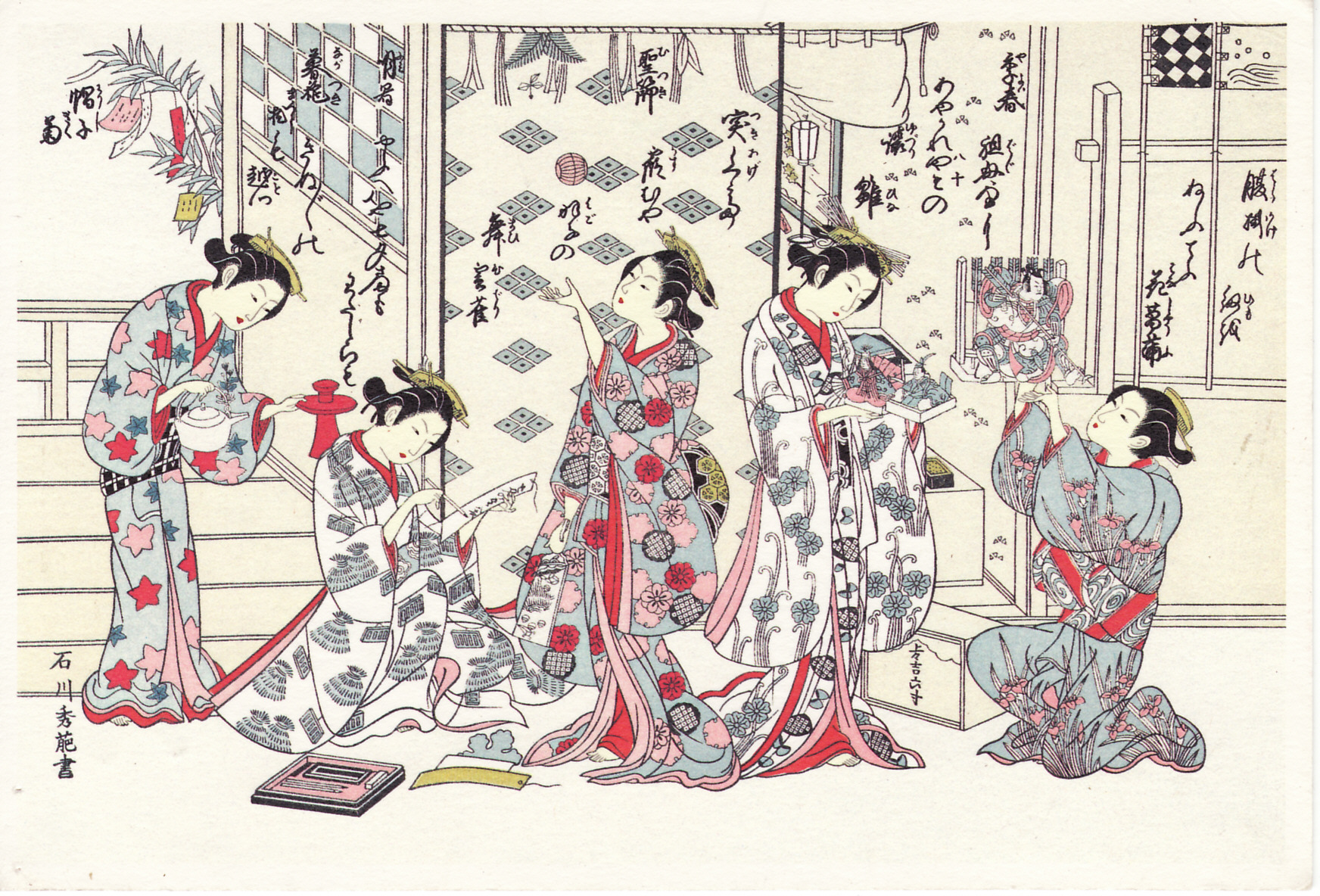 |
| Tanabata in Edo, by Hiroshige |
This past Friday Shofuso celebrated Tanabata, the Star Festival—technically a day early (六夕?), but sometimes one has to sacrifice the ideal for the feasible! We met at the Japanese House and tied our wishes to a bamboo tree, and then our tea teachers served first koicha (dark/thick tea) and then usucha (loose/thin/light tea) in the fifteen-mat room (書院), for about sixteen guests, with several hantou to keep things moving. The sweet for koicha was of
agar-agar*, with beautiful flecks of gold. As we proceeded, the sun went down; this made haiken (examining the dougu, which for this occasion were especially fine) a bit of a challenge, but by the end of usucha we could see stars—Orihime and Hikoboshi stopping by for a visit! It was a lot of fun, and good practice for me, and it's always nice to see visitors experience tea.
 |
| kuro-raku |
Attending these two tea gatherings recently has me thinking about dougu (tea utensils). One of our teachers makes
chawan, and I think I'd like to give it a shot; we do have some pottery studios here in town, and it would be a fun (and useful) skill. Reading up on chawan procedure leaves me a bit daunted, though; it's one thing to throw a functional bowl for general use, but, of course, for chanoyu a bowl has to meet certain
specifications—shape and texture of the rim and foot, grain and shape of interior (for successful whisking of tea), glaze patterns (to mark the front), etc. I guess one saving grace is that some of the best bowls are the most "wabisabi", humble and a bit uneven; I particularly like bowls in the kuro-raku 黒烙 style, like the 17th-century bowl at left, for the beautiful contrast of the green tea against the dark glaze. But I wouldn't want to try whipping tea in a bowl with an uneven base.
This excellent post, and
this follow-up, from the blog of a chanoyu practitioner, detail the must-haves for a chawan.
*Agar-agar is great for tea sweets, but you can also use it to culture bacteria, run polymerase chain reactions, house ants in an ant farm, make dental impressions, and, probably, to clean windows and ovens. There's nothing it can't do!



No comments:
Post a Comment